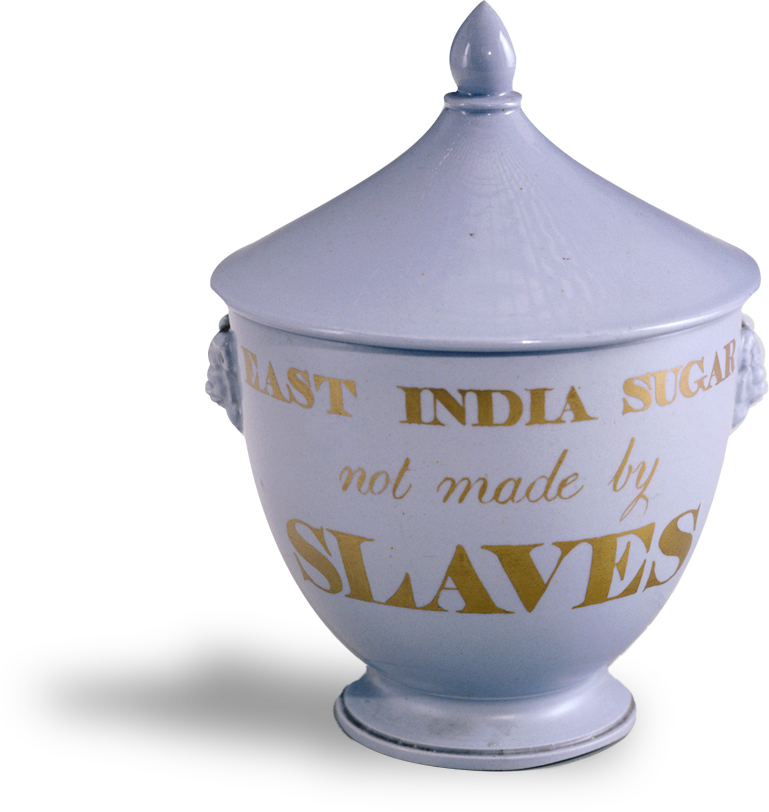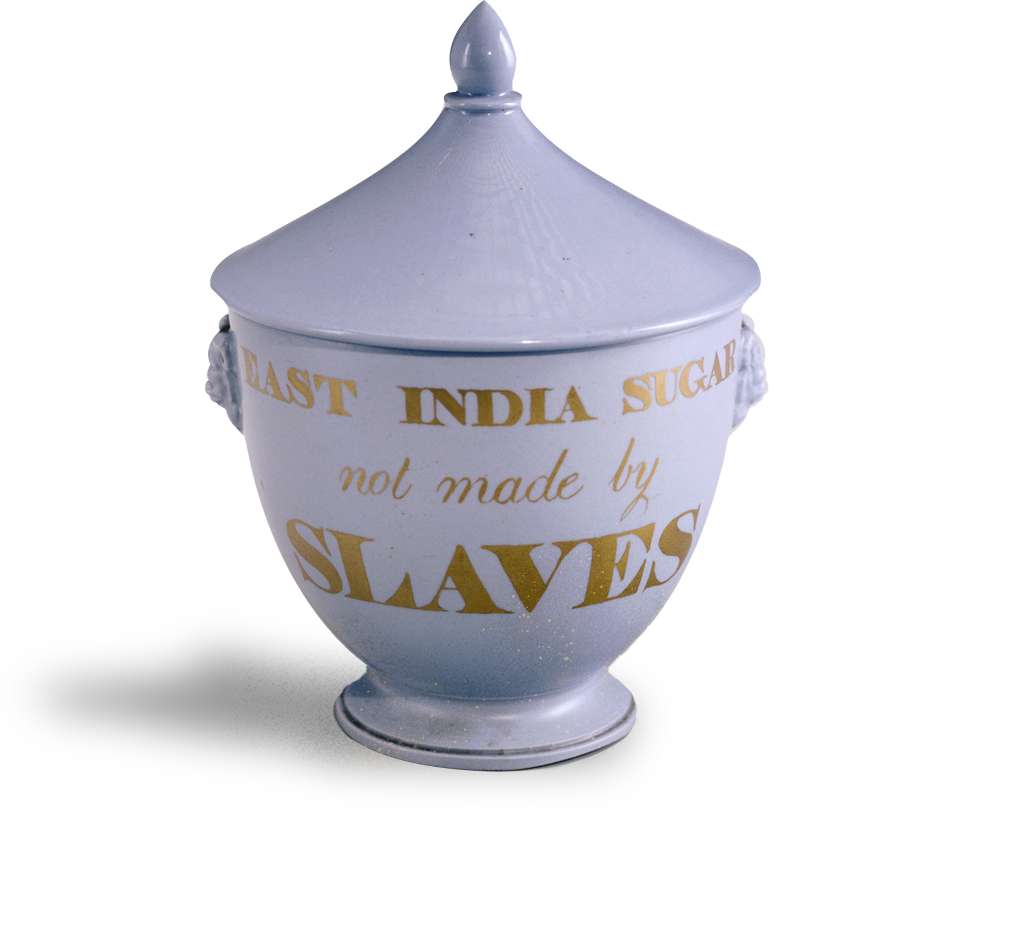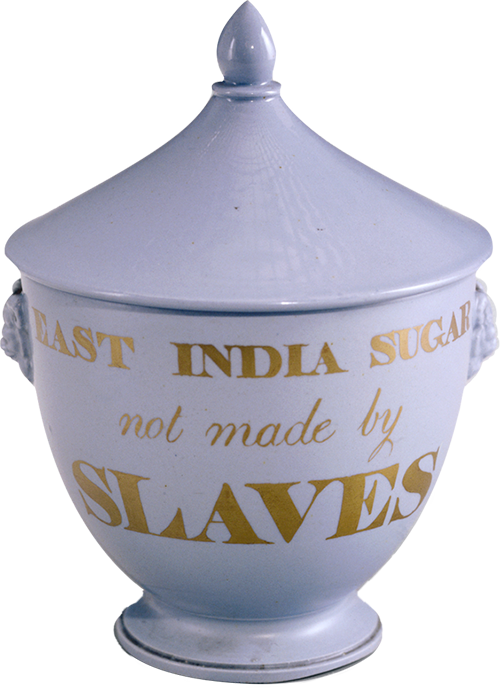





The logo “East India Sugar Not Made by Slaves” printed on this sugar bowl was part of a campaign in Great Britain to encourage the consumption of sugar grown, harvested, and processed by free workers in India, or “East India,” rather than sugar from Caribbean plantations. From the mid-1600s, the production and consumption of sugar rested upon the kidnapping, enslavement, and abuse of African men, women, and children who produced thousands of tons of sugar cane in the Caribbean every year. While Great Britain outlawed the slave trade in 1804, when this bowl was made slavery was legal in the British Caribbean and would remain so until 1834. Living conditions were so cruel that natural population increase did not take place among enslaved Africans for almost 200 years.
This sugar bowl was made at a time of growing activism about ending the enslavement, and in many cases, brutal murder of Africans and their descendants in the British Caribbean. East Indian sugar became one of the first goods marketed as what today would be called a “fair trade” product. As the abolitionist William Naish asserted in 1828, those who consumed East India sugar were “undermining the system of slavery, in the safest, most easy, and effectual manner, in which it can be done.” In contrast, enslaved leaders among Great Britain’s sugar colonies were forced to engage in more direct, deadly, and ultimately more effective, forms of rebellion. Today, Black, Brown, Indigenous, and LGBTQ+ people continue to use similar strategies of Indirect and Direct Action to confront issues of racial inequity and social injustice.







